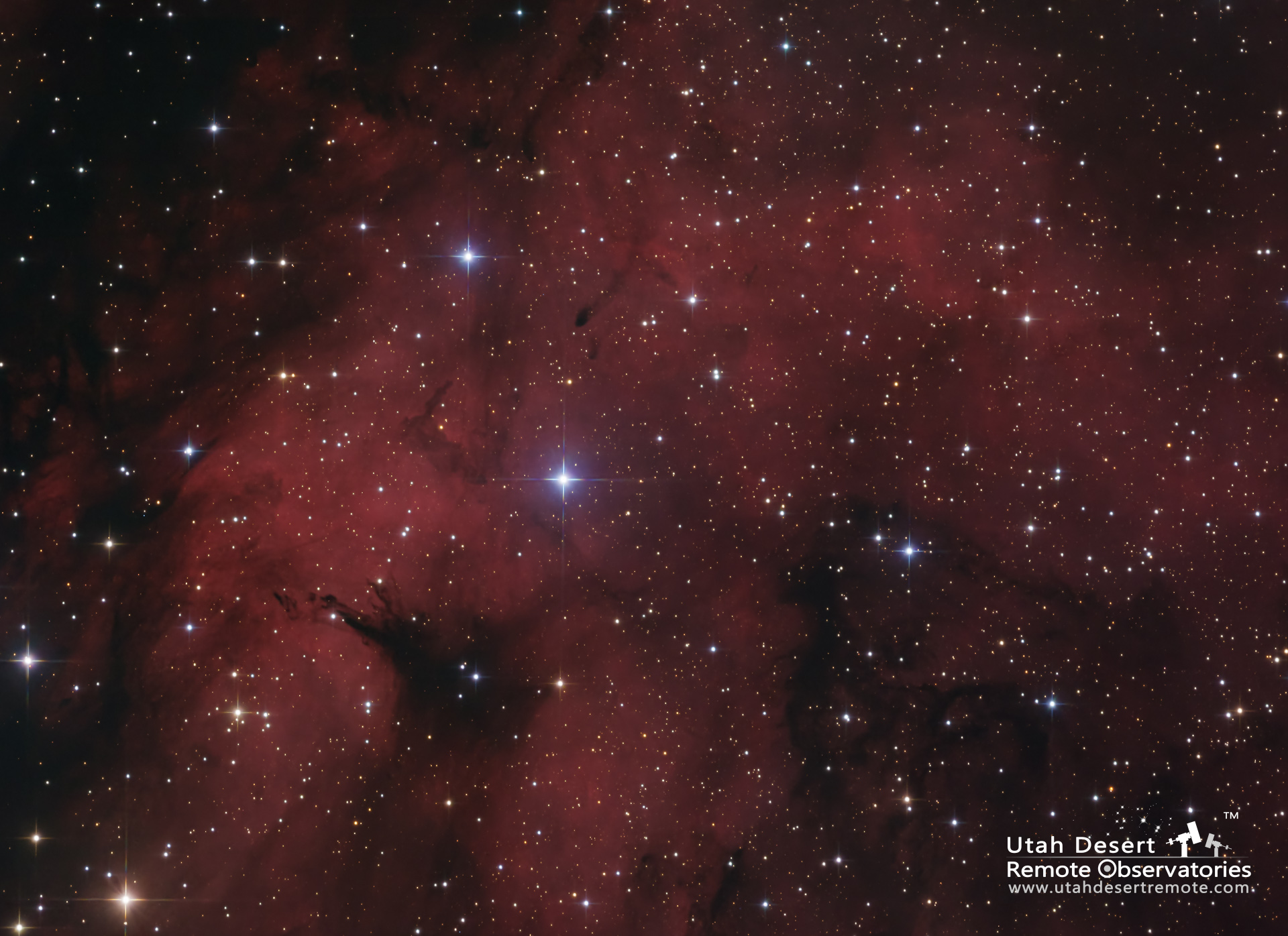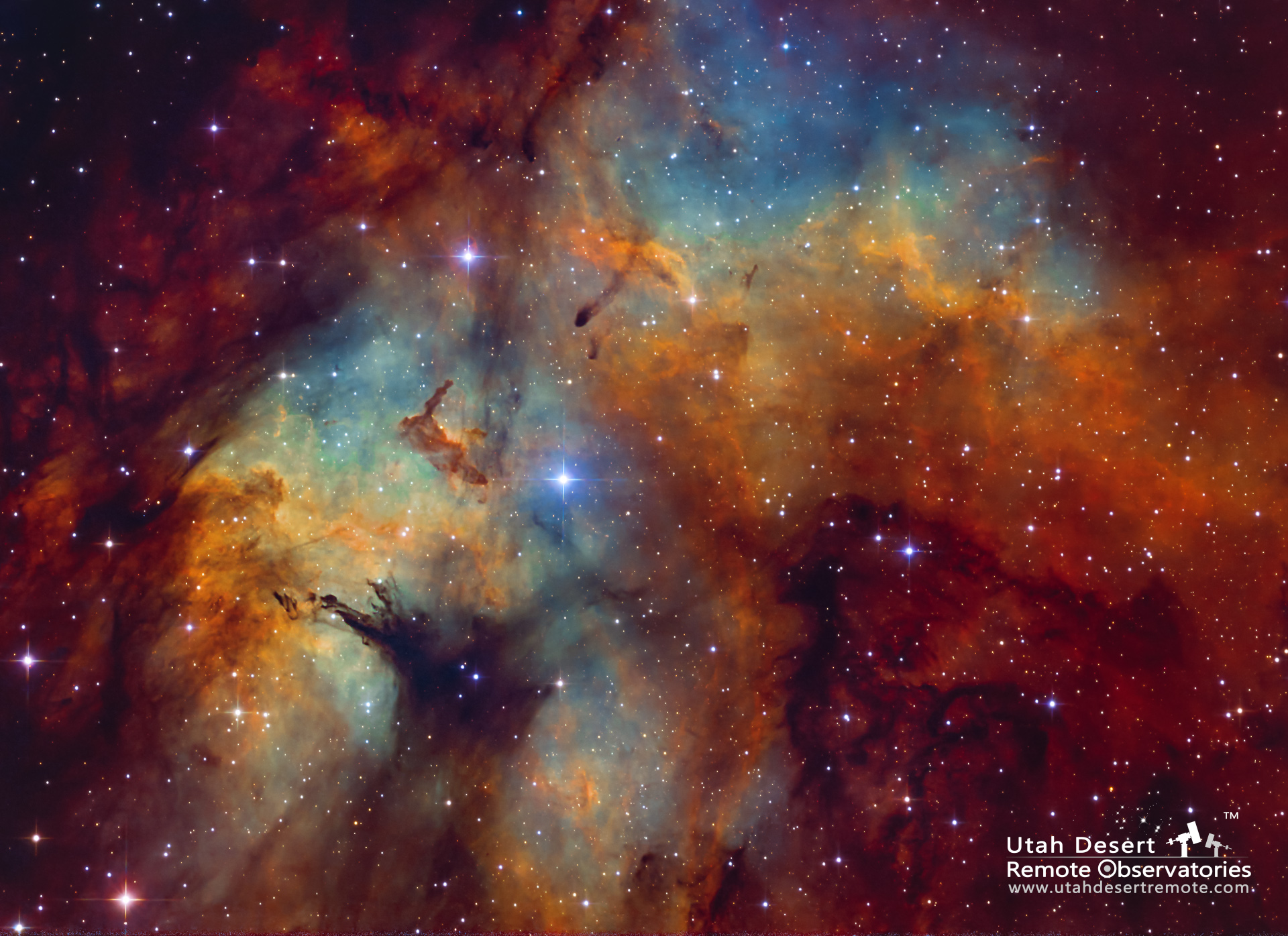

Which image above is real? the “before” image shows the gas cloud surrounding the bright star Sadr in natural color, the way a color camera would record the colors. Other than the stars the image is mostly red. That’s because it heavily dominated by the red color of ionized hydrogen. There is also quite a bit of ionized sulfur, but it too is red – almost the same color of red in fact. There is also some oxygen which glows with a green-blue color, but it’s not nearly as bright as the red hydrogen glow so it is quickly overwhelmed and lost in the haze.
The “after” image is the same region captured using special narrowband filters that specifically expose for just the colors of hydrogen, sulfur and oxygen. By capturing each element individually we have more flexibility to shift the colors so that there is more color contrast. Sulfur and hydrogen are both red, but sulfur is slightly more red. With narrowband images it’s a fairly simple task to shift the red of hydrogen to a more orange-yellow color so that it’s different from sulfur. The colors are still in the correct chromatic order, just separated. Ionized oxygen naturally emits a blue-green color so in the “after” image its color is also translated to a more pure blue, again to separate it from the hydrogen.
The result is a color palette that’s frequently referred to as SHO, meaning that the sulfur, hydrogen and oxygen are assigned respectively to the red, green and blue colors.
Everything in both images is real, but the colors have been translated so that they make more sense to us. It’s like reading a book that was originally written in a different language but has been translated into your language so you can understand it. It’s the same story, just translated for better understanding.
So, which image is real? I think the best answer is that both are real.
